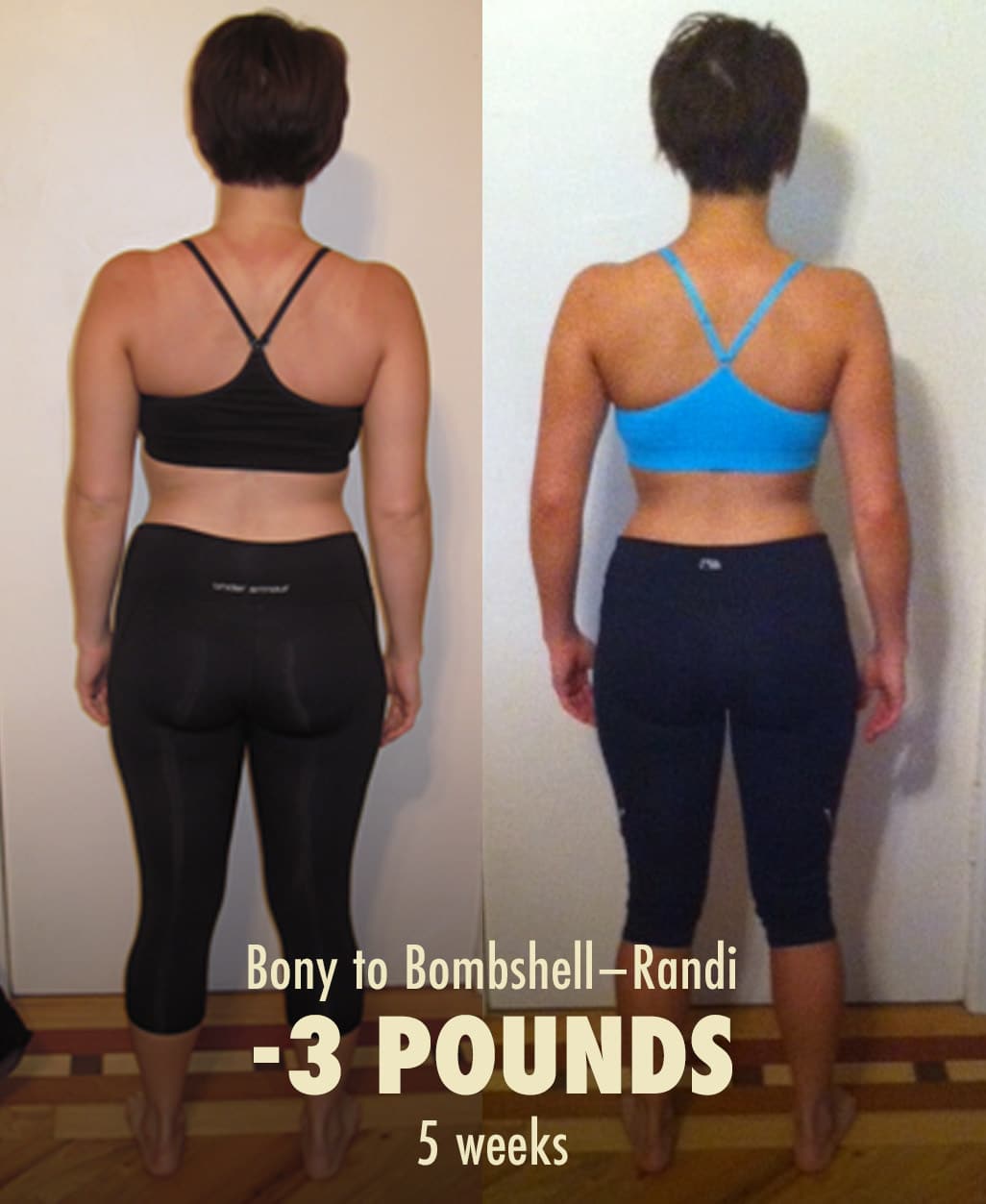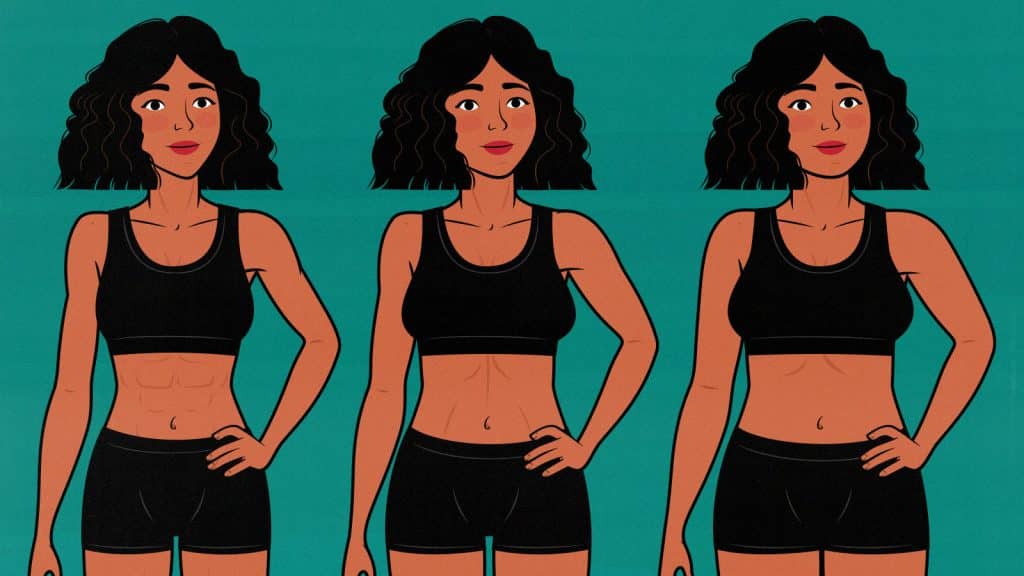
The Ideal Women’s Waist Size: For Health & Attractiveness
Having a narrow waist is incredibly important for your health. Most research shows that your waist size has an even stronger effect on your health than your weight (study).
Your waist size also has a huge impact on your appearance. I’ve run several surveys on thousands of men and women, and waist size has a more powerful effect on a woman’s appearance than body-fat percentage (survey).
It’s healthier and more attractive to be overweight with a smaller waist than to be of normal weight with a larger waist (study). Most women know this intuitively, which is why it’s so common for women to strive for a slimmer waist rather than slimmer hips, thighs, and breasts.
But what exactly should that goal be? When is a small waist small enough? What’s the ideal waist size?
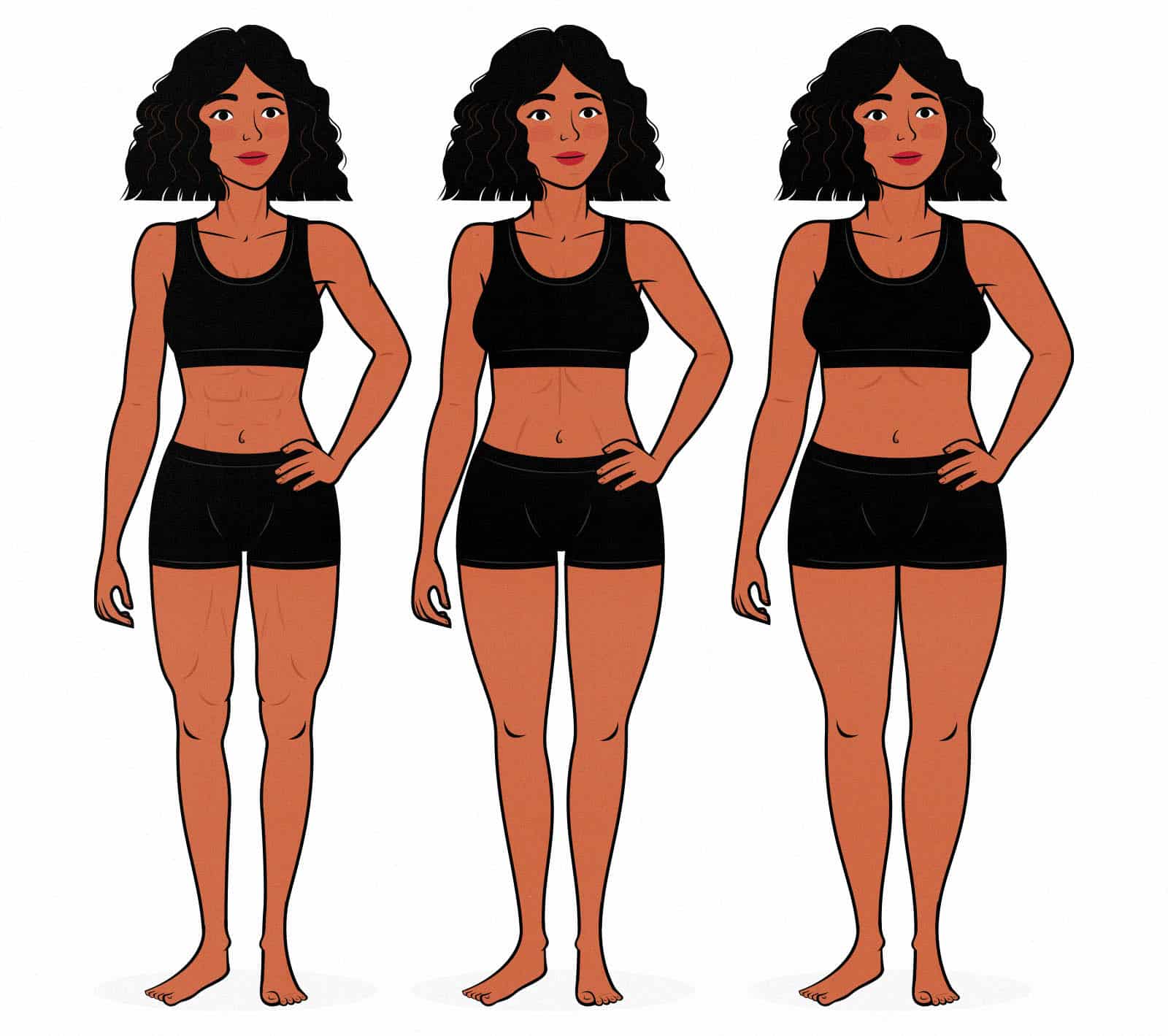
The Healthiest Waist Size
Your healthiest waist circumference is half your height or slightly less. In a 2014 paper, Ashwell and colleagues found that women with a waist circumference of 0.4–0.5 times their height lived a year or so longer than women with even smaller waists, and up to ten years longer than women with thicker waists.
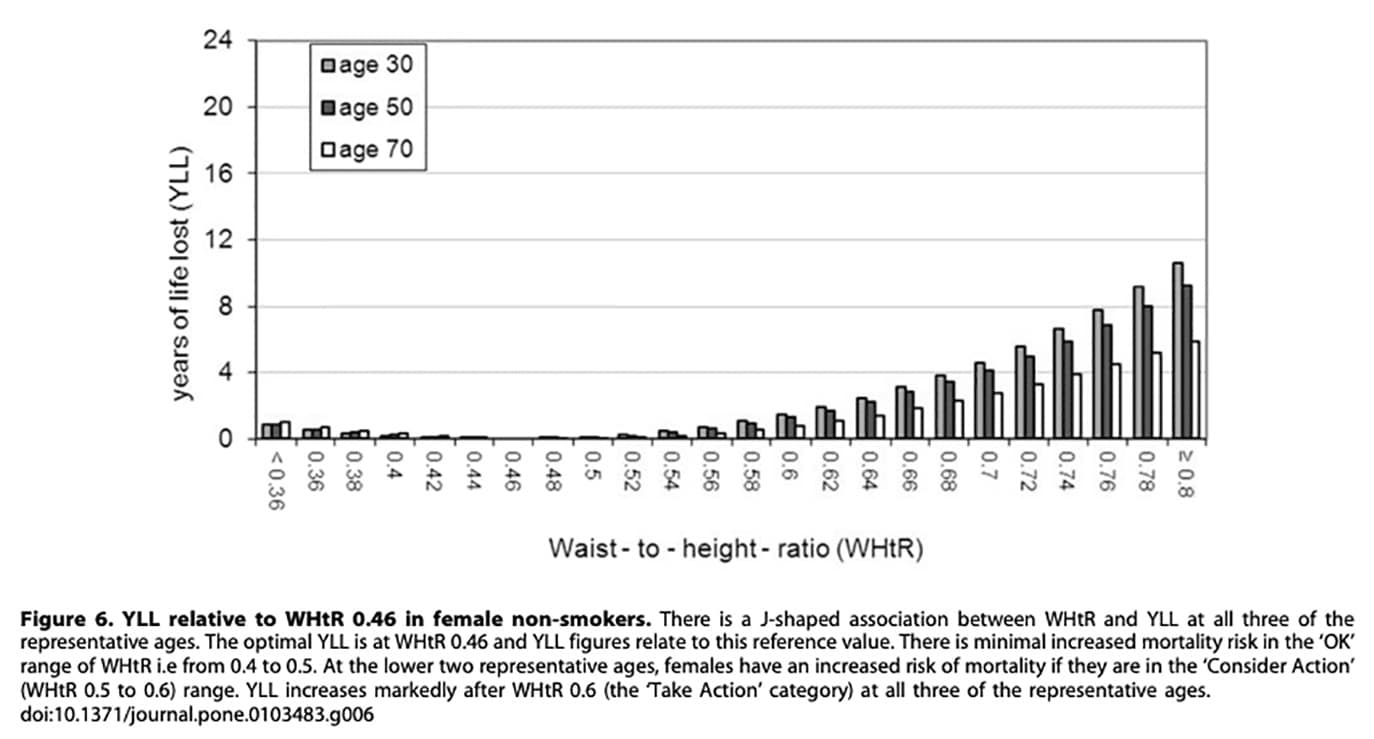
For example, the average woman is about 5 feet 3 inches tall (63 inches), and her healthiest waist circumference is between 25 and 32 inches, measured at the narrowest part of her waist. You can find your own ideal waist circumference on the chart:
| Height | Healthiest Waist Size |
| 4′10″ (147 cm) | 23–29 in (58–74 cm) |
| 4′11″ (150 cm) | 24–30 in (60–75 cm) |
| 5′0″ (152 cm) | 24–30 in (61–76 cm) |
| 5′1″ (155 cm) | 24–31 in (62–78 cm) |
| 5′2″ (157 cm) | 25–31 in (63–79 cm) |
| 5′3″ (160 cm) | 25–32 in (64–80 cm) |
| 5′4″ (163 cm) | 26–32 in (65–81 cm) |
| 5′5″ (165 cm) | 26–33 in (66–83 cm) |
| 5′6″ (168 cm) | 26–33 in (67–84 cm) |
| 5′7″ (170 cm) | 27–34 in (68–86 cm) |
| 5′8″ (173 cm) | 27–34 in (69–87 cm) |
| 5′9″ (175 cm) | 28–35 in (71–88 cm) |
| 5′10″ (178 cm) | 28–35 in (71–89 cm) |
| 5′11″ (180 cm) | 29–36 in (73–91 cm) |
| 6′0″ (183 cm) | 29–36 in (74–92 cm) |
Risk starts to rise at a waist circumference of more than half your height, but it really starts to pick up at 60% of your height. That’s when it’s most important to find a way to burn the extra visceral fat.
Losing weight can help, but you aren’t just trying to lose weight; you’re trying to burn fat specifically underneath your abs. That means it’s better to attack your belly fat with exercise, nutrition, and lifestyle:
The Link Between Waist Size, Health, and Beauty
Most beauty features can be traced back to health and fertility, and waist size is a great example of that. The idea is that healthy women were more likely to get pregnant, give birth to healthy children, survive childbirth, be capable mothers, and go on to have more kids, meaning that more of their children survived and went on to have kids of their own.
The men who were better at choosing fertile women had more children, and thus their genes and preferences were more likely to be passed on to subsequent generations. That’s why there’s such a strong link between health and attractiveness (study). Or at least that’s what the top researchers (such as Nancy Etcoff, at Harvard, and David Buss, at the University of Texas) believe to be the case.
That means that the path to a more beautiful waist size is also a path towards better health:
- If you’re overweight, getting a healthfully thin waist is even better for your health than losing weight (study). Losing weight still helps, but your waist size is even more important.
- Having too little fat in your hips, thighs, and breasts can be unhealthy, and it makes your waist seem thicker by comparison. Most research shows that a waist-to-hip ratio of 0.7 is the healthiest and most attractive (study). That means your hip circumference should be about 1.4 times bigger than your waist circumference. If you’re naturally thin, gaining more muscle and fat in your lower body will probably get you further than trying to get an even smaller waist. Having some extra fat in your lower body is also great for fertility and helps with the brain development of your baby during pregnancy (study).
- Visceral fat makes your waist thicker, increases inflammation, and interferes with organ function. You can get rid of it by losing weight, doing cardio, lifting weights, eating a healthy diet, and living a healthy lifestyle. Even if you don’t lose weight, a good exercise and diet plan will cause you to burn more of the fat underneath your abs and store more fat in your hips, thighs, and breasts, improving your waist-to-hip ratio.
The trouble is that we don’t always have the best intuition about our own bodies. You probably have this gut instinct that a smaller waist and wider hips are more desirable, but sometimes that instinct gets exaggerated. Sometimes, women are drawn to extreme leanness, striving for proportions that are unhealthy and look strange.
The same goes in the other direction. Women are good at intuitively spotting the strongest, healthiest, and most athletic men. Men often get confused, though. We can’t see it as easily in ourselves. We often have a desire to get even bigger and even leaner. We get inspired by bodybuilders like Arnold Schwarzenegger, and some guys even take steroids in pursuit of that goal. Most women think that’s weird. Most men think it’s similarly weird when women strive for overly curvy figures (like Kim Kardashian) or overly thin figures (like runway models). More on that here.
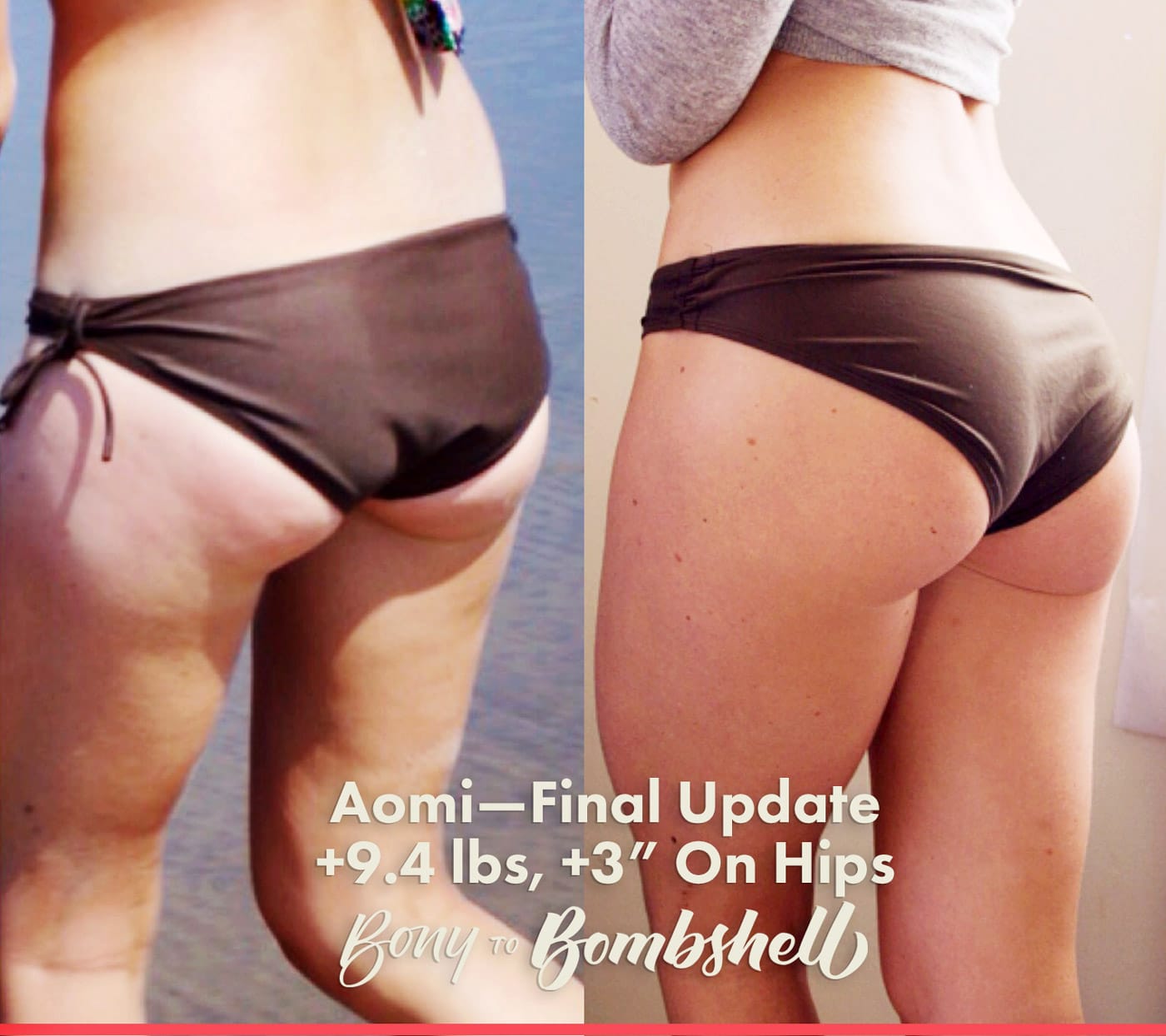
Can Your Waist Be Too Small?
Most women assume that the smaller your waist is, the better. There’s a glimmer of truth there, and you can see it in cartoons and on social media. Disney princesses have tiny waists, as do some of the most popular female fitness influencers.
For example, you might have seen people photoshopping Disney princesses to have more realistic waists:
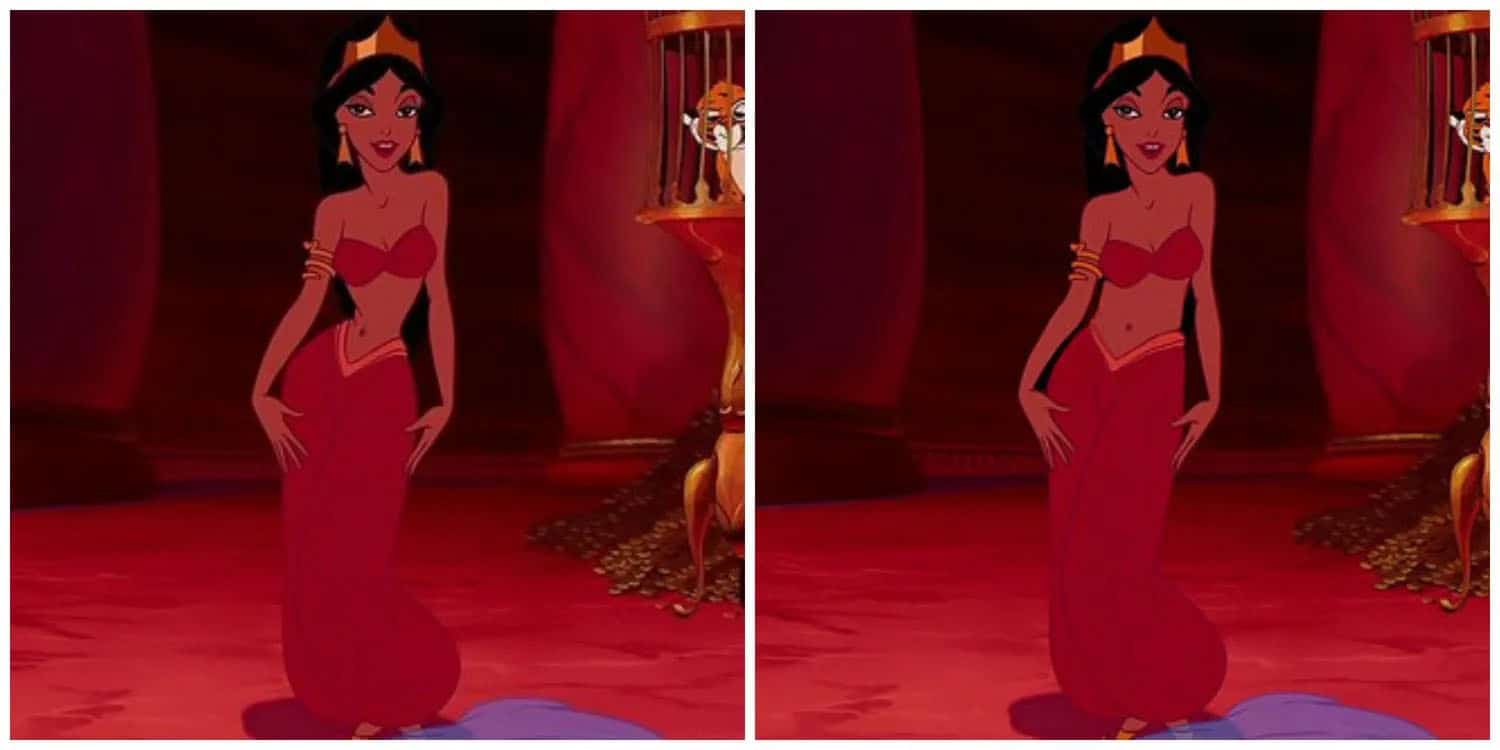
The photoshopper did a good job of giving her a more normal waist size, especially for a naturally thinner person. It doesn’t have the same iconic look as the illustration on the left, though. There’s a reason why Disney exaggerated her waist-to-hip ratio.
Artists often do the same thing for male cartoon characters, giving them unusually broad shoulders tapering down to unusually narrow waists:

But these are cartoons, and social media plays by some of those same rules. We know that cartoons aren’t real, so we aren’t expecting the proportions to look human. In real life, there is a point where the health and attractiveness benefits of getting a smaller waist plateau and then reverse.
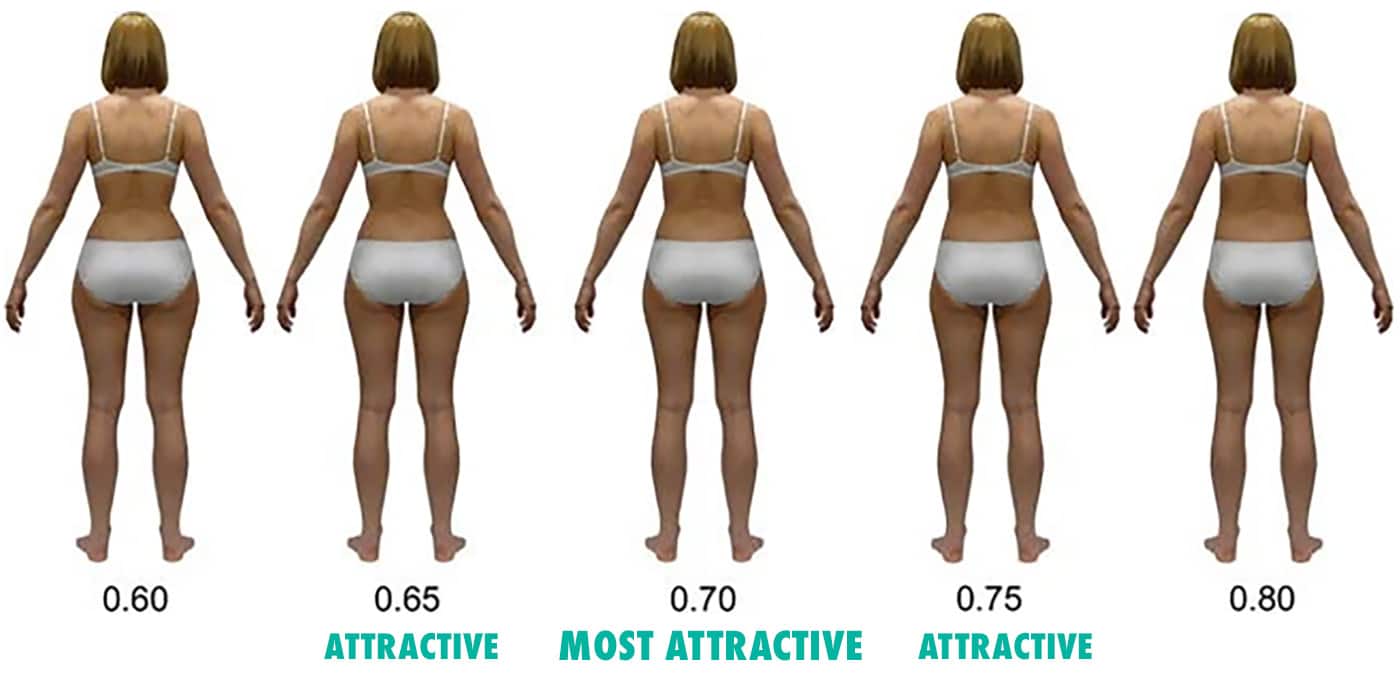
For example, Koscinski and colleagues had men choose between different women’s silhouettes (study). Different men had slightly different preferences, but almost all of them clustered around a waist-to-hip ratio of 0.65–0.75. That lines up perfectly with the healthiest waist size for the average woman.
The researchers surveyed only forty men, though, and they struggled to reach statistical significance. I also thought it would be interesting to create a spread showing what it would actually look like to lose fat to get a smaller waist. So, I drew my own illustrations of women with varying waist sizes and body fat percentages, and I surveyed a little over a thousand men (survey):
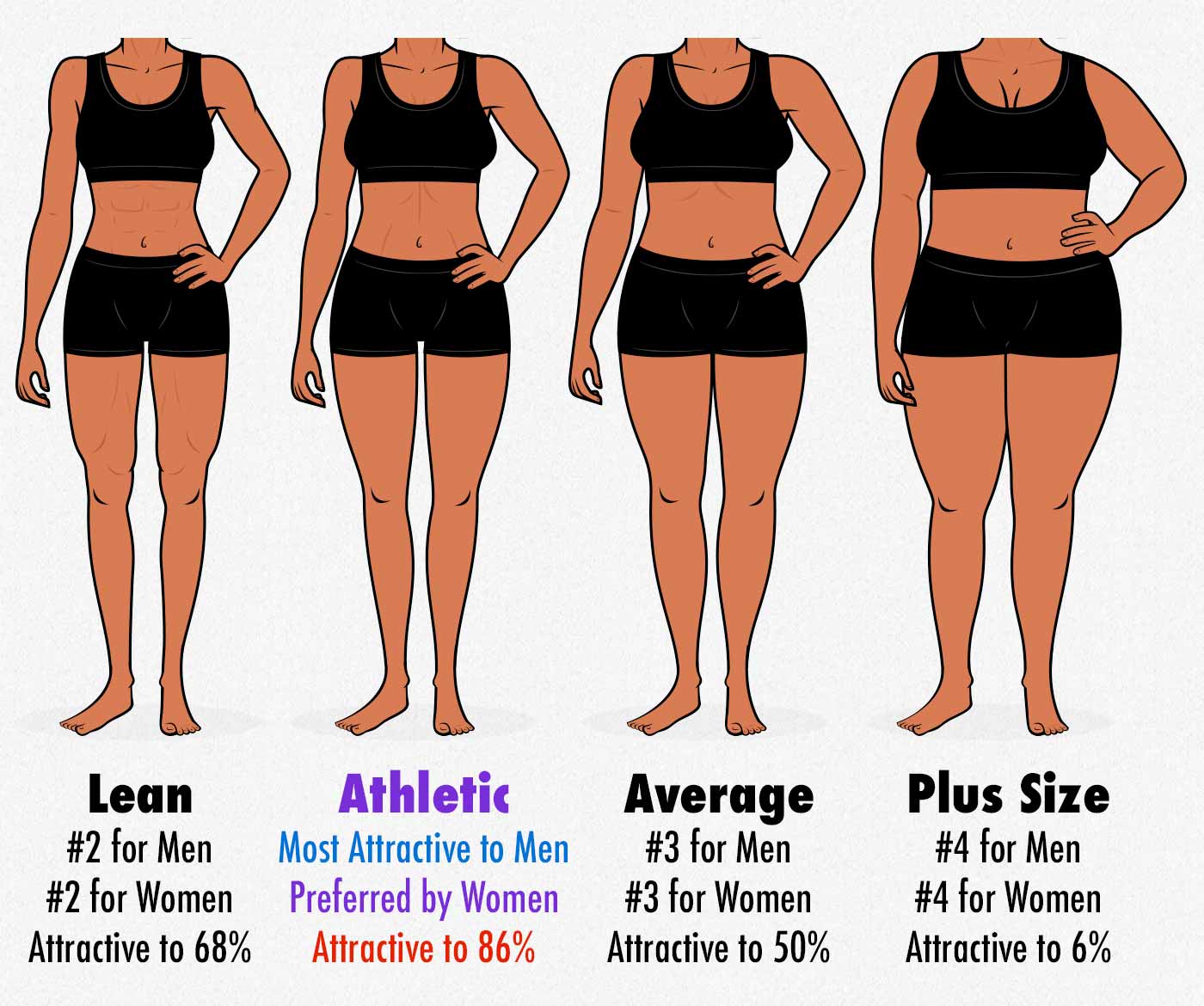
I found that most men preferred the waist size (and overall body shape) that looked the healthiest and most athletic. Just like in the Koscinski study, men didn’t prefer the woman with the smallest, leanest, most extreme waist.
Your waist doesn’t need to be any smaller than half your height, and it probably shouldn’t be much smaller than 0.4 times your height, especially if that means cutting down to less than 20% body fat. If you’re measuring your waist-to-hip ratio, the lower limit seems to be a waist that’s 0.65 times the size of your hips.
The Most Attractive Waist Size
For your appearance, a waist circumference of anywhere from 0.4–0.5 times your height will look great, and being on the narrower side might be slightly more attractive. What matters more, though, is the ratio between your waist circumference and hip circumference (study). So, you may also want to aim for a waist-to-hip ratio of 0.65–0.75.
How to Get a Smaller Waist
You might have heard of “spot reduction,” where you try to lose fat in a specific area. That’s mostly a myth, but your waist is an exception. Visceral fat—the fat underneath your abs that harms your health and makes your waist thicker—is one of the few types of fat you can target. More on that in our article about how to get a smaller waist.
If you want our help, check out our Bony to Bombshell Program. In addition to everything included with the program, we’ll also take a detailed look at where you’re starting, give you a plan, help you track your progress, and give you feedback along the way.
Shane Duquette is the co-founder of Outlift, Bony to Beastly, and Bony to Bombshell, and has a degree in design from York University in Toronto, Canada. He's a certified conditioning coach with over fifteen years of experience helping over 15,000 men and women get stronger, leaner, fitter, and healthier.

